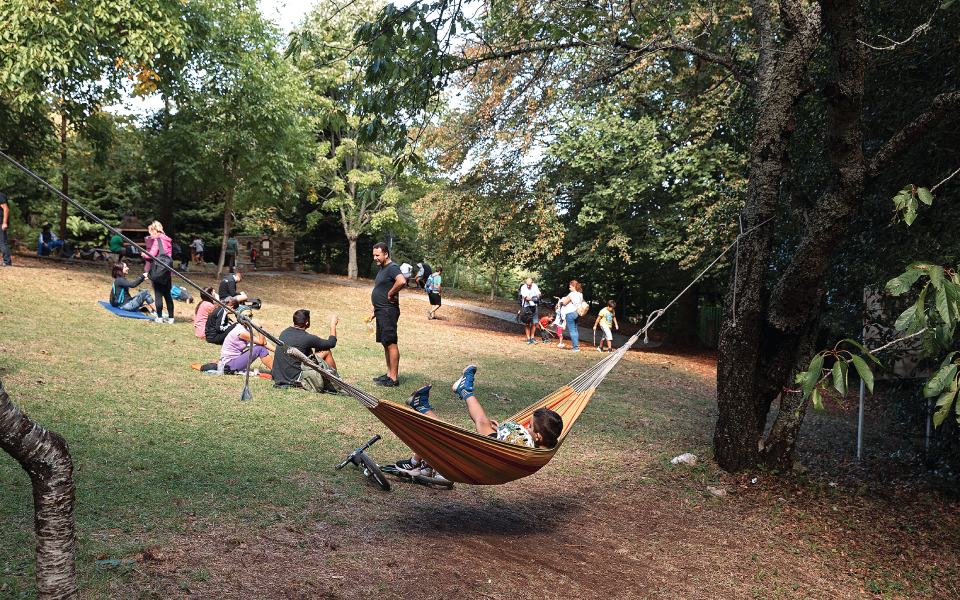It was early October, just before sunset. Sitting on a sofa-shaped rock, we admired the view to the north. Beneath us was a green carpet of chestnut trees. Lake Koroneia, with the old fishing village of Aghios Vasileios on its shores, stretched straight ahead, and to the right sections of Lake Volvi were discernible. Between them we could spot the village of Scholari and, in the distance, Bulgaria. The ancient Thracians had enjoyed this same view; they built a fortress on the plateau below the highest peak to control the area.
In order to arrive at this unknown spot on Mt Hortiatis, located just 30 minutes from the center of Thessaloniki, we had walked for 15 minutes, turning right along the path from the Livadi area. On the way we heard Eurasian jays cawing, saw blackbirds chasing each other on the branches and scanned the ground for fallen chestnuts. We were early; most of the locals from Thessaloniki come here in early November to gather up the chestnuts. Those in the know roast them according to a special technique, using fern leaves.
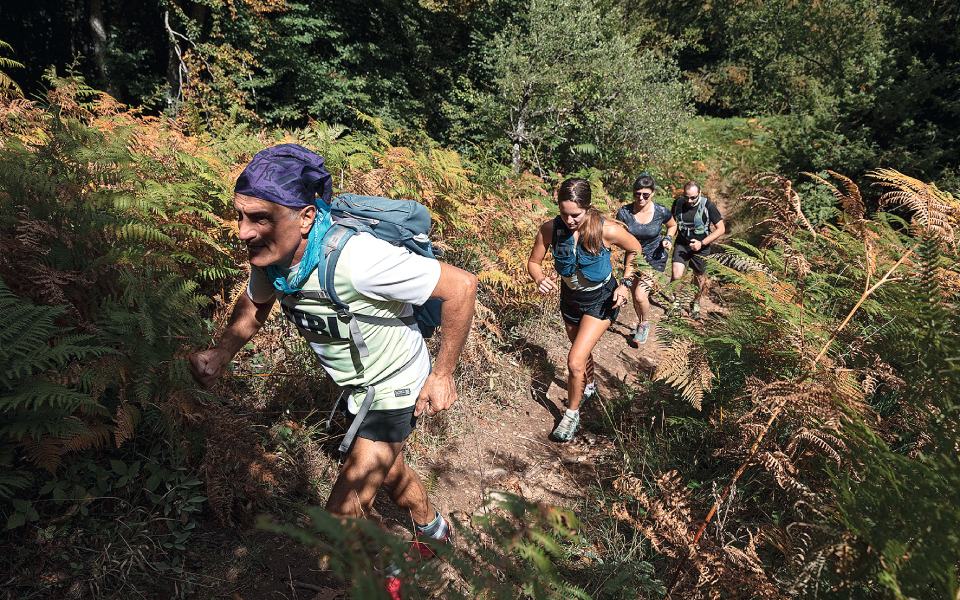
© Konstantinos Tsakalidis
Our guide, Nikos Kontos, and his business partner, Vasilis Zarzavatsakis, have been running the Hellenic Mountaineering Club refuge for about a year now. It is located at Tzek Baktse, at an elevation of 1000 meters at the heart of the mountain. This refuge has been in operation for more than half a century; the original shelter, built in 1938, was appropriated by the army long ago.
This two-story stone building with red windows and interior wood paneling is surrounded by tall beech and chestnut trees. It functions as a meeting point for hikers, climbers, cyclists and other mountain lovers.
The patio area on the sunny Sunday that we visited was full of life. People in masks were walking around, holding cups of steaming hot beverages, small pitchers of tsipouro and dishes laden with a variety of delicacies. It felt a little like a party. A father was teaching his son to balance on a slackline; a family was having a picnic; other children were lying on the hammocks and laughing. Katerina from the Hellenic Mountaineering Club of Thessaloniki was catching her breath before jogging on, and Irini had just finished her hatha flow yoga class. Climbers Konstantinos Koutsionikolas and Dimitris Tosidis invited us to climb with them up to a nearby plateau, under the Air Force radar installation. Kontos and Zarzavatsakis have begun replacing the bolts and anchors on the rock face, making it safer for the climbers.
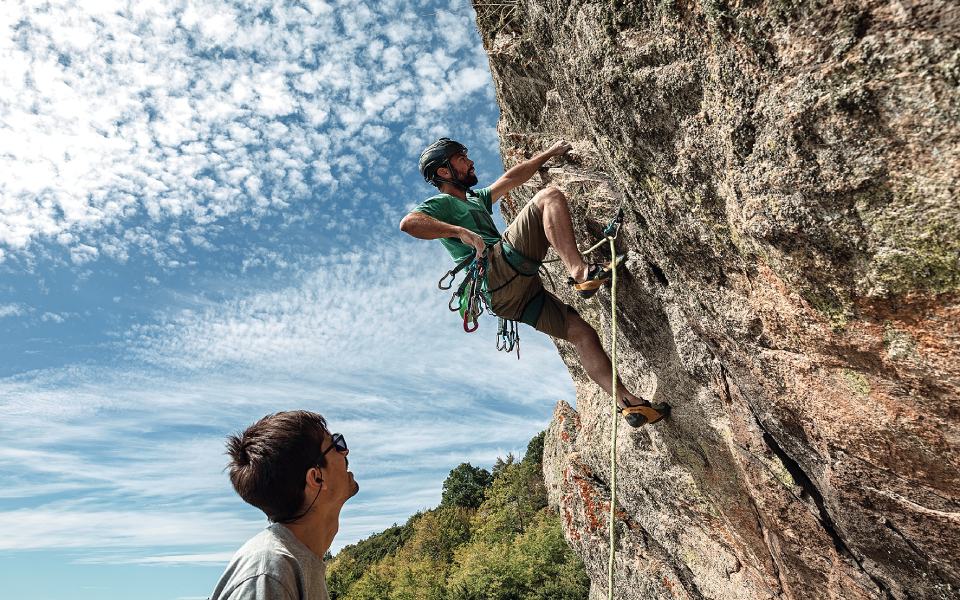
© Konstantinos Tsakalidis
FOREST TRAILS AND ROUTES
“Can we start, or are you still gathering nuts for your son?” the group asked me. The truth is that I was caught up in that activity. With its highest peak reaching 1201 meters, Mt Hortiatis spreads east of Thessaloniki until Mt Holomon in Halkidiki, and features a thick forest with such biodiversity that you could spend an entire day here just collecting nature’s gifts.
The mountain, known in ancient times as Mt Kissos, offers plenty of hiking trails and is ideal for novices, with relatively easy routes lacking steep sections or dangerous crevices. Its rich network of paths – not all marked – traverse two distinct zones. The first, below the forest road leading to the refuge, is blanketed with chestnut, walnut, cherry and oak trees. The second, above 750-800 meters, is covered with oak trees that create such a thick canopy that sunlight doesn’t reach the ground. Here, mossy plants create an endless green carpet, while a variety of flowers, such as pansies and buttercups, abound in the few clearings that dot these woods. I still remember the taste of the sweet raspberries, the rosehips from wild rose bushes and the walnuts that we collected on the way to the refuge, as well as the sound of acorns falling like heavy drops of rain on the yellow leaves. With such beauty surrounding me, it felt as if I were in a Claude Monet painting – until the sound of a gunshot brought me back to reality. The anguished cry of a wild boar broke my heart – a distressing note on an otherwise dreamy weekend.
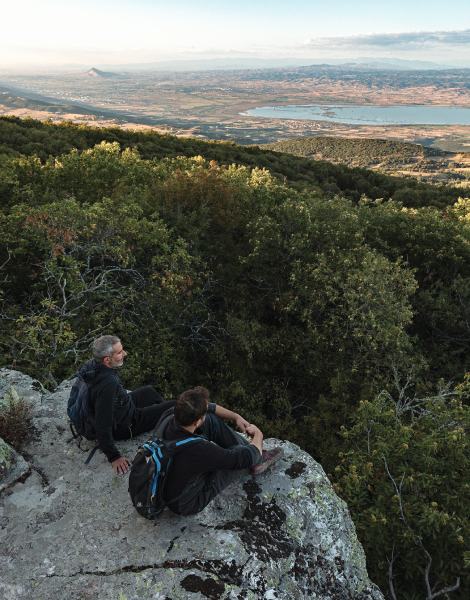
© Konstantinos Tsakalidis
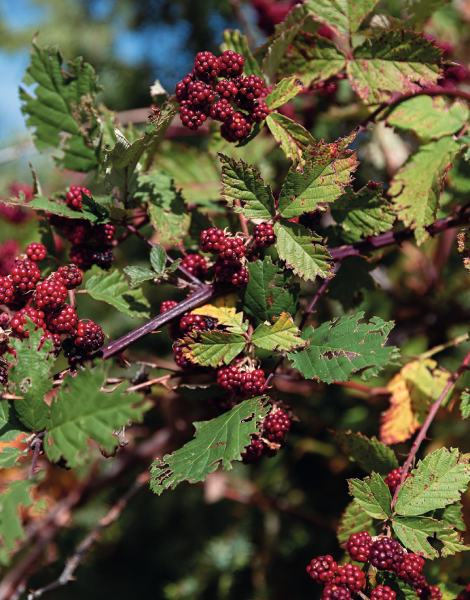
© Konstantinos Tsakalidis
THE ICE MAKERS
The most famous path on Mt Hortiatis is that of the “ice makers,” which begins after the last houses on the edge of the village of Hortiatis and ends at the refuge. You’ll find it on your left as you climb the hill, on a wide turn with two green signposts indicating the way. One portion of the path features cobblestones and was constructed by the Allies to transport materials for fortifications during World War I. This, however, is not the most interesting historical fact about this trail. What tops that is the presence of enormous hollows in the ground, scattered across the forest floor and resembling bomb craters. “These were the pagomagaza [ice houses]” explains 70-year-old Babis Nanakoudis, who was born and raised in the village and is the publisher of the local newspaper Hortiatis 570.
Until 1955, when the last ice maker, Angelos Gouramanis, passed away, locals made ice on the mountain using natural methods. In January and February, they would direct water from springs near these hollows towards grooves, called “bares,” which were cut into the ground. The Ottoman traveler Evliya Çelebi named these icy troughs “God’s eyes.” When the water froze, the ice makers would chop out irregularly shaped pieces using an axe and place the blocks onto a wooden grate in the pagomagaza (ice houses). These were built in the form of a downward-pointing cone; this way, any melted water would trickle away. For insulation, they would place beech leaves between the ice blocks, as their stems don’t rot. In the early summer, they would load their mules and head to Thessaloniki and sell their ice, which was highly sought-after in the days before electrical refrigeration.
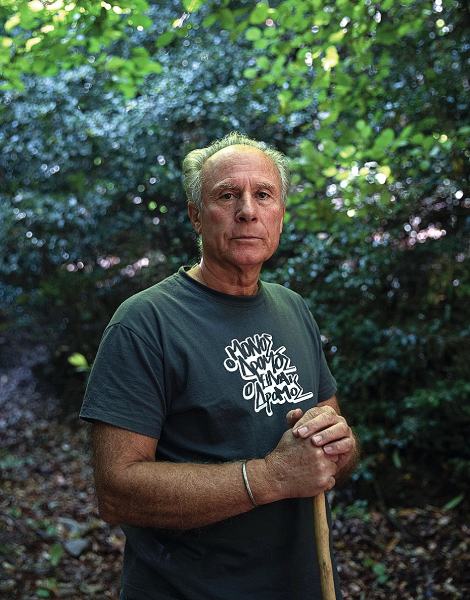
© Konstantinos Tsakalidis
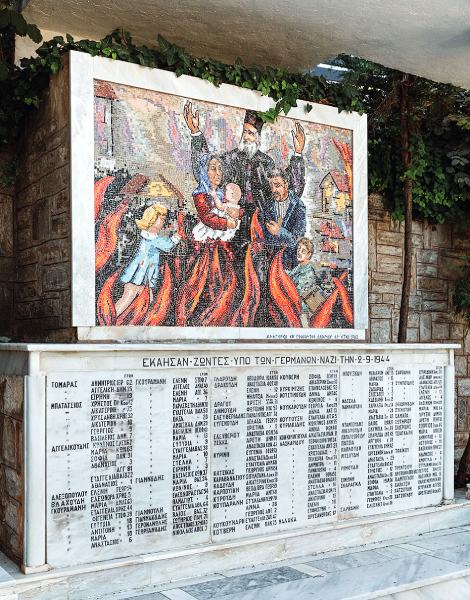
© Konstantinos Tsakalidis
THE MARTYRED VILLAGE
As Nanakoudis spoke to us about the history of the mountain, other hikers gathered around to listen to more of his stories. He spoke of his grandparents, two of the 149 victims that the Germans, and their Greek collaborators, burned alive on September 2, 1944. Inevitably, this horrific crime still haunts the families of Hortiatis who, in 1960, funded the erection of a monument in the victims’ honor in the center of the village. In fact, the Davoudis residence, one of two sites of the massacre (the other was Gouramanis’ bakery) has become an ossuary honoring the memory of the victims.
A piece of broken roof tile inspired Nanakoudis to talk to us about the girizia, built cisterns that controlled water flow and helped flush the ancient water pipes that carried water to the Roman aqueduct, located at the village entrance. The girizia used to be found on these slopes. Listening, I realized that this man is a walking encyclopedia of the wider region, one fighting to keep these historical memories alive. He does this with his newspaper and with impromptu guided tours of the mountain, as well as by hosting a hike along the route of the ice makers on the first Sunday of every November. He also runs Periklides, the café housed in the oldest building in the village. Here, every winter weekend, he serves tsipouro (pomace brandy) and meze with his wife and daughter, surrounded by local memorabilia, traditional local garments, old gramophones and vintage furniture. It turns out that this place, too, is a refuge, offering shelter and protection to the history of this land, and to us!
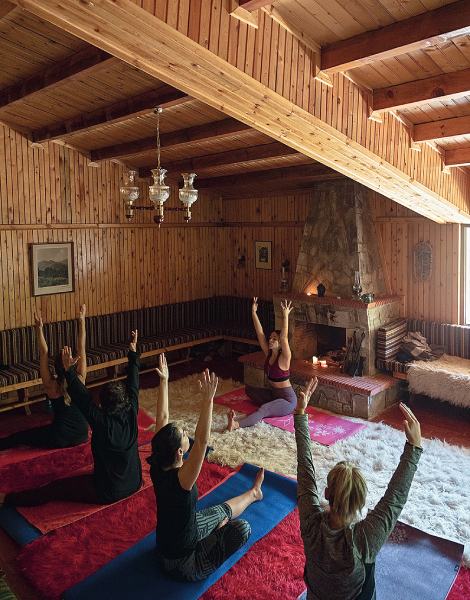
© Konstantinos Tsakalidis
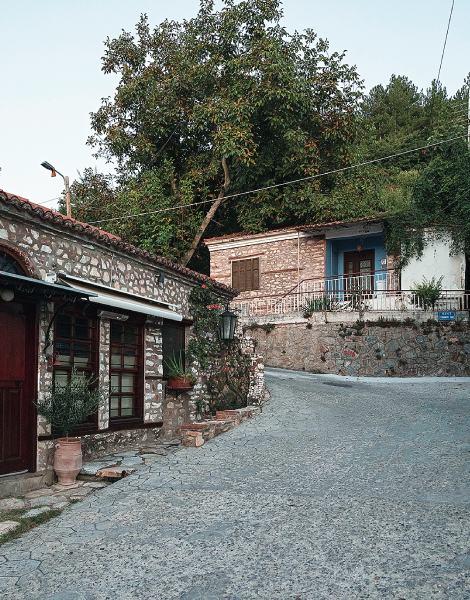
© Konstantinos Tsakalidis
USEFUL INFORMATION
HORTIATIS REFUGE
The refuge operates all year round, weekends only. It offers delicious food at great prices. The traditional sausages and the mushroom soup are two of the highlights on this unexpectedly interesting menu. Overnight stays cost €12 for adults and €5 for children, and advance booking is recommended. There are two spaces that hosted 16 and 12 guests respectively before the COVID-19 pandemic. Yoga classes cost €8 per person, and you need to register in advance. Contact info: Tel. (+30) 697.825.3056, 693.887.5095.
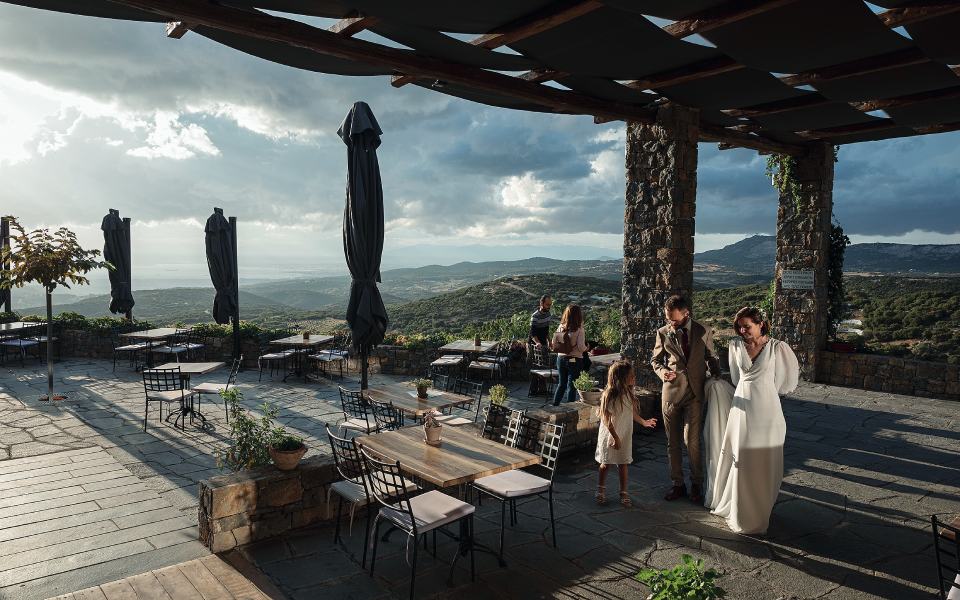
© Konstantinos Tsakalidis
FOOD
There are many family tavernas and grill houses in the area, all serving meals at affordable prices. If possible, avoid them on Sundays, as most are packed with crowds coming up to the mountain for the day.
If you like fine wine and prefer a more sophisticated approach to dining, then Tzaki Ho (Tel. (+30) 2130.349.266) is the ideal choice. Angelos Kirimis, a third generation restaurateur, in collaboration with Nikos Nifoudis and Vaios Aggelinoudis, has created a contemporary gastronomic hotspot, with a country-style atmosphere and cuisine that follows the 100-kilometer rule – meaning that most produce is sourced from nearby areas; this includes the rib eye steak from Koutsioftis Farm in Imathia and buffalo meat from Kerkini. Try the “flower pot,” a Greek salad served in a clay pot featuring toasted olive paste as “soil,” or the buffalo kavourmas (a confit) served with poached eggs, a cream made of graviera cheese, and truffle carpaccio. The wine list is one of the most extensive in the Thessaloniki area, boasting over 500 labels.
Aelios Petra (Tel. (+30) 2310.358.880), located near the village of Hortiatis and open all year round from Wednesdays to Sundays, is also an interesting choice. Boasting exceptional views of the Thermaic Gulf, it operates as both a café and a restaurant. The two-story stone building, with its grand veranda (blankets are offered against the cold) and impressive dining room, serves dishes that offer traditional flavors achieved with more contemporary cooking techniques. Most of the fruits and vegetables are grown in their own garden or procured from nearby organic farms.
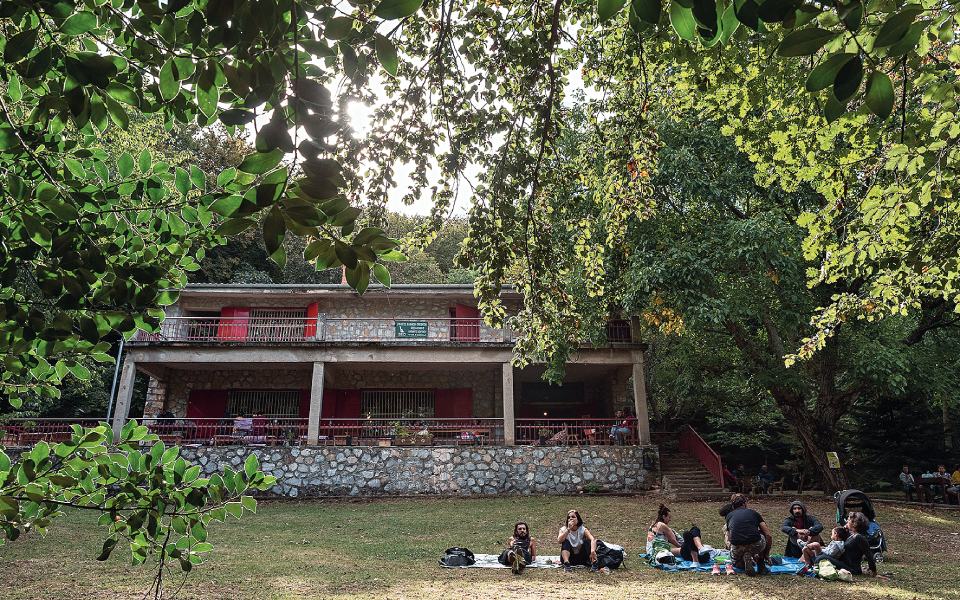
© Konstantinos Tsakalidis
EXCURSIONS
Due to its proximity to Thessaloniki, Hortiatis is perfect for day trips and offers a number of activities, including hiking and cycling. While many associations and amateur groups organize trekking and biking excursions, excursions, it is best to stick with accredited businesses. One such enterprise is Giorgos Nanos and Tasos Efraimidis’ company Outline Adventures (Tel. (+30) 2130.270.040), founded three years ago, which offers one-day cycling trips (with snacks included) to Hortiatis. They have a large selection of mountain bikes and helmets for those traveling without their own gear. Costs run around €110 per person or €65 should you have your own equipment, which they’ll be happy to transport to the mountain via trailer.
For organized hikes with trekking poles, call Green Oliver (Tel. (+30) 2310.283.534) and Chrysostomos Zervopoulos. For €50 per person, you’ll enjoy a wonderful tour of Mt Hortiatis and get to admire its flora and fauna from up close.

